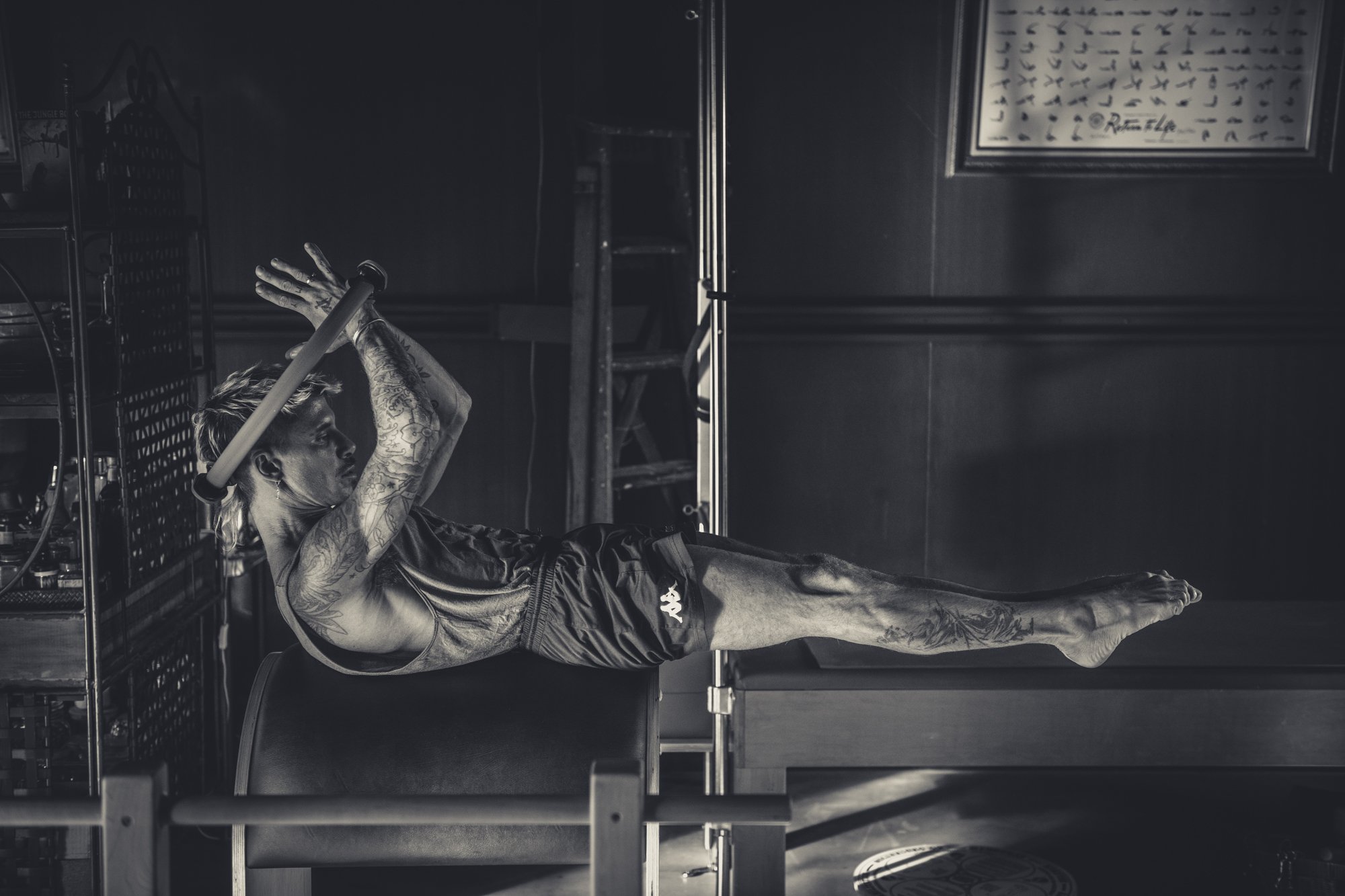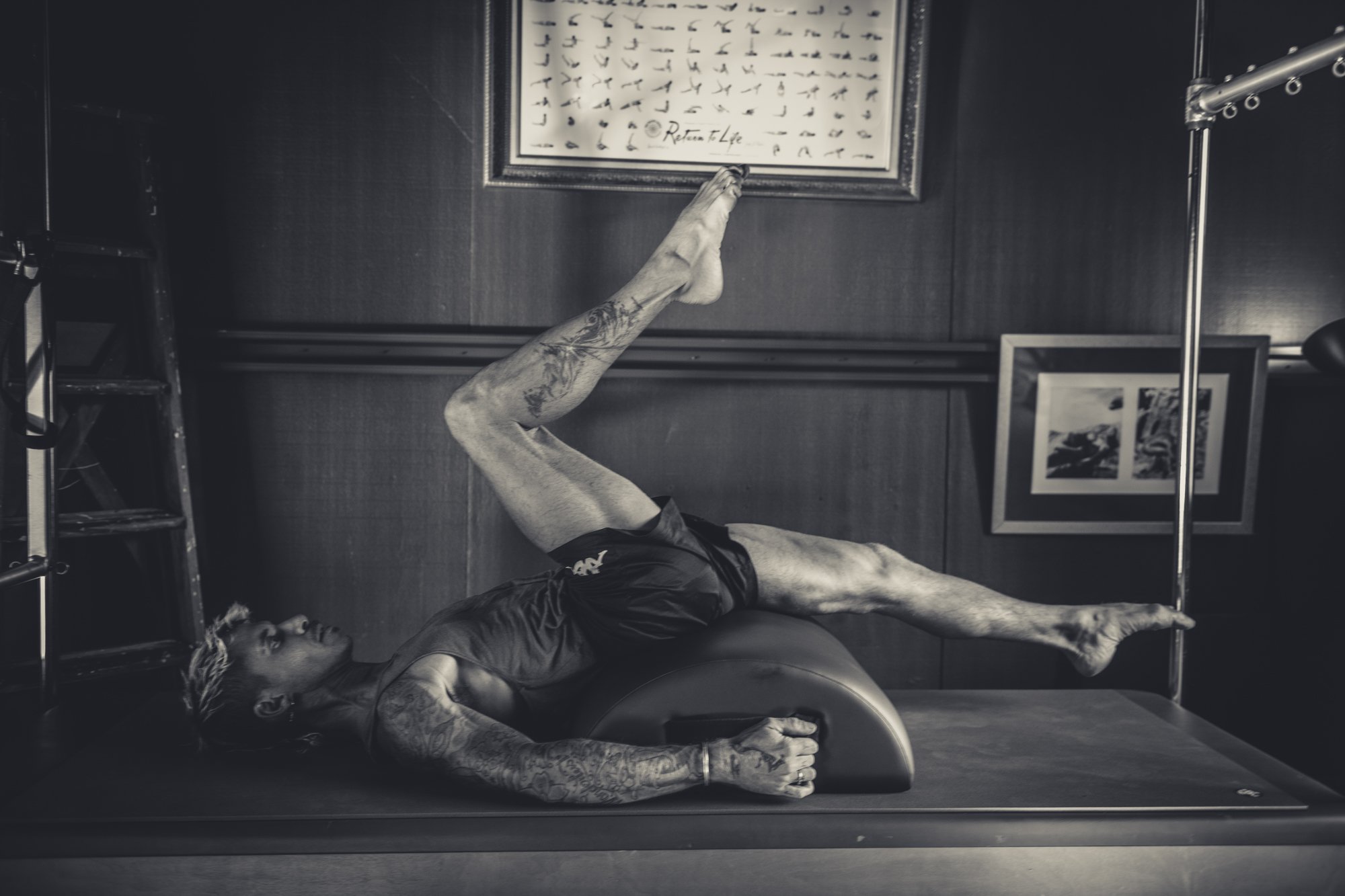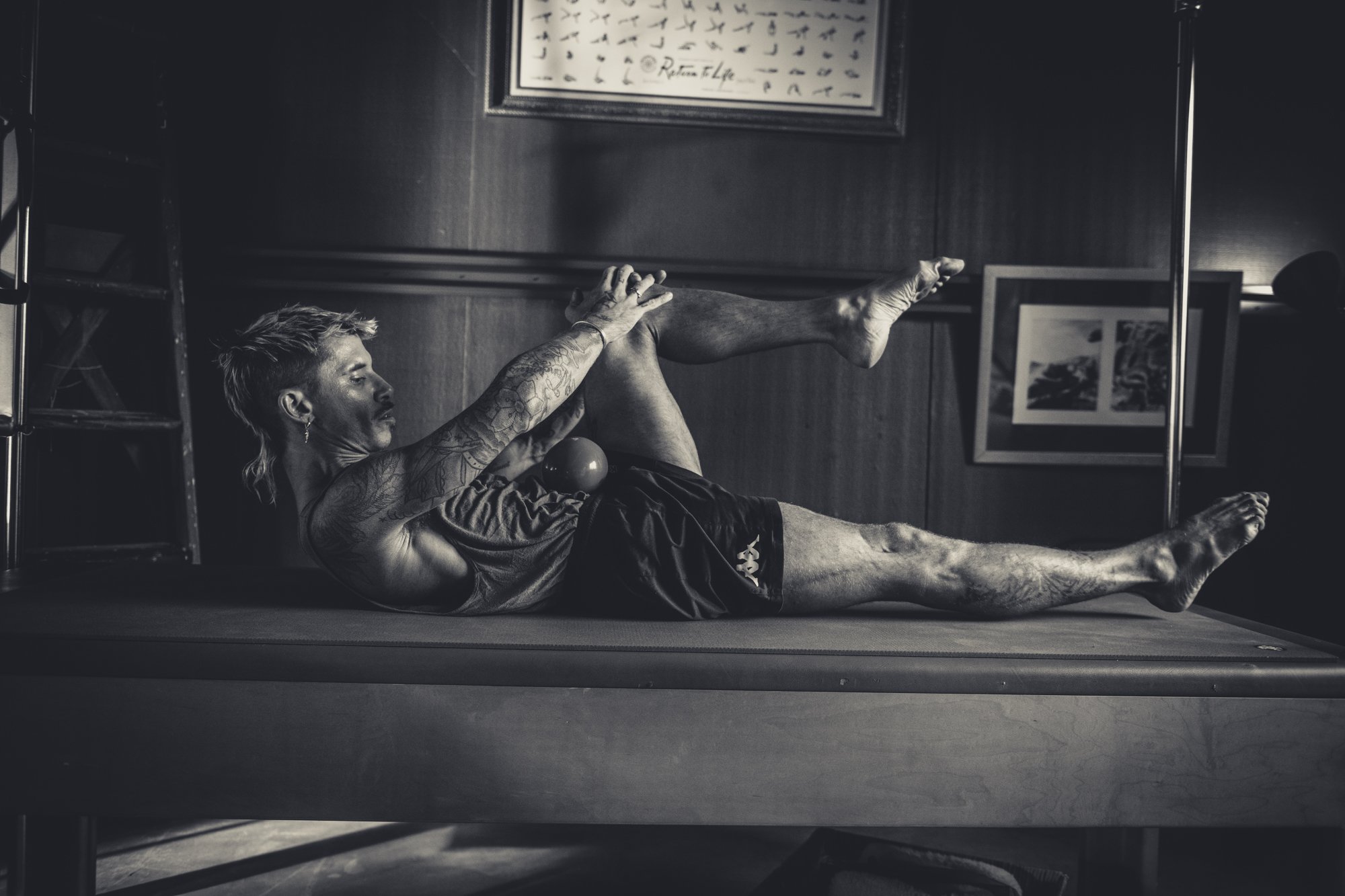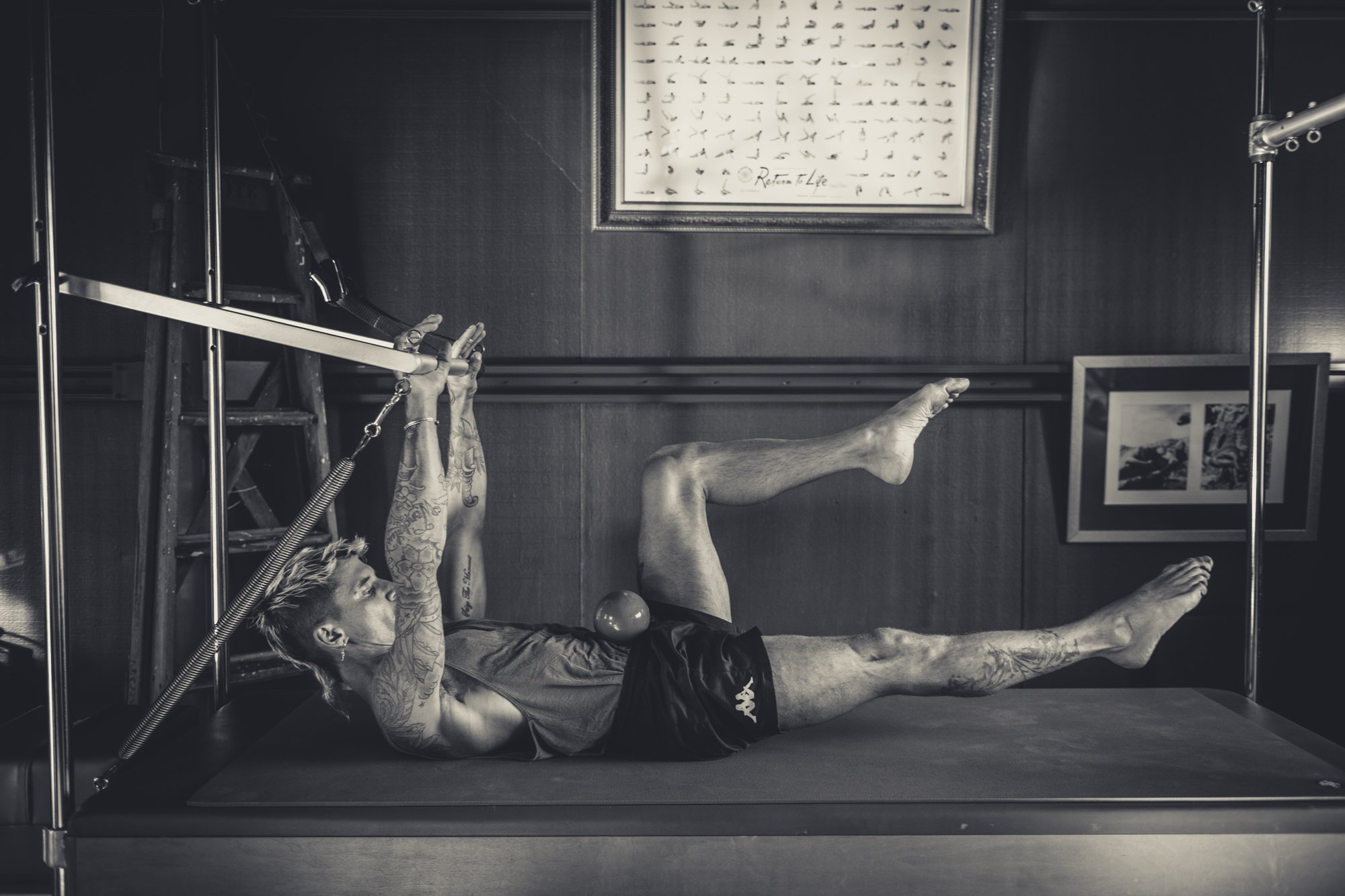Finding an effortless approach to the Single Leg Stretch
The Single Leg Stretch - Done 7 ways with the intention of finding more control.
For me, the Single Leg Stretch is all about controlling the body with our movements. Finding oppositional stretch, stabilisation, muscle dissociation and breath. Like the Hundred, I see the exercise as an opportunity to find endurance and stamina while moving the blood through the body with the breath.
I see a lot of clients struggle with this exercise because like many other exercises, their focus is drawn closer to a destination rather than a process. It’s common to see too much pressure put on the abdominal wall which results in loss of stability, control, and breath. By breaking the exercise down into fun, yet challenging variations, clients can find an opportunity to connect to various parts of their body resulting in an effortless approach.
Here are some ways you can challenge clients to find this deeper work.
1. The Pilates Circle with Ladder Barrel (sideways)
The intention of this variation assists in finding the stretch more in the upper extremities by releasing the neck flexors and using the serratus anterior and tricep bracci to stabilise the upper body while working with proprioception. The challenge is drawn closer to utilising the larger upper body muscle groups to lengthen the spine while maintaining softness in the neck and control and stability through the pelvis and the spine on an uneven surface. It offers the client the option to work harder by using their Psoas to pull the knee towards the chest, while finding stretch in opposition at the same time. They can also try a Double Leg Stretch holding the Circle for a challenge, see here if the client maintains same stretch and softness found in the first variation.
2. Baby Arc
This variation helps to achieve deeper work in finding the stretch in the lower extremities with the hip in extension while maintaining lumbar-pelvic stability. Using the Arc clients can feel the lumbar vertebrae connected to the arch while still feeling a sense of neutral in slight lumbar flexion. It’s challenging but so rewarding for the hips! You can also add weights to the ankles to achieve both a deeper and stronger stretch. Watch the client doesn’t begin to overextend through their lumbar, especially when loaded. I like to keep a close eye on the arrangement of their centre and look closely at the hip extensors. A great preparation for The Single/Double Leg Lift.
3. Toning Ball
Using the toning ball on the Transverse Abdominus (TA) can offer a great tactile cue to clients to achieve optimal depth through their TA and highlight a challenging neutral pelvis intention while moving. It’s a great way to allow the client to feel” ‘what their centre is up to. It offers a challenge to maintain optimal control through their centre while facilitating a wider diaphragmatic breath. Beginning with feeling the back of their thighs on the mat and moving from that place.
4. Cadillac
I like this variation as it’s offering the client to feel the connection through their cervical spine. By pushing against the bar and using the larger muscle groups of the upper back and latissimus, the client can find length through the back of their head while moving through the exercise. It one of the more challenging variations for many, as it highlights where their control is coming from. For example, have they been properly connecting to their upper back during the exercise or other variations? It’s commonly taught that the exercises focus is the abdominals. A great option is to try single arms to challenge the stabilising stretch and strength in opposition using the internal and external obliques. Keep a close eye on their Upper Trapezius to make sure they are not working from here and are connecting to their Lower Trapezius.
5. Reformer (arms wide)
One of the variations of The Single Leg Stretch using the Reformer I like to teach is Arms Wide. It’s assisting the client to find a strong stabilising connection through the latissimus and the obliques while maintaining the stretch through their mid-upper back. Challenging overall spinal, shoulder and core stability. It can encourage the client to find softness through their Upper Trapezius. The exercise can be done with or without a chest lift with the same intention. Adding the chest lift will increase the challenge through the Deep Cervical Flexors and control through their Centre.
6. Wunda Chair with Overball or Hanging Cadillac with Trapeze
This challenges the client to maintain work through their gluteal and hamstrings while challenging Pelvic Stability and working with a neutral alignment through their shoulders. It can be challenging to not take too much load into the neck, by using the opportunity to create a lot of stretch through their pectoralis and anterior deltoid while connecting strongly to the shoulder stabilisers and can allow them to begin to feel softness and stretch through their Deep Cervical Flexors and Spine. This is also a great preparation for The Roll Up.
7. Mat (same hand to ankle, opposite to knee).
When I feel clients have gained an awareness onwhere to stabilise and stretch from and the stomach is strong enough to support the legs, I then like to bring it to the Mat with the focus on the breathing. With the above intentions, I cue them to inhale to prepare for the exercise, and as they begin to exhale lift into the Pelvic Floor and move through consecutively 6-8 repetitions while holding the lift and exhale all the air out of their lungs, and then release the Pelvic Floor on the inhalation. This intension about piecing it all together, creating endurance and strong/mindful movements.
Bradley Inness owns Ateom an intimate boutique studio nestled in the Byron Bay Hinterland, NSW, Australia.







